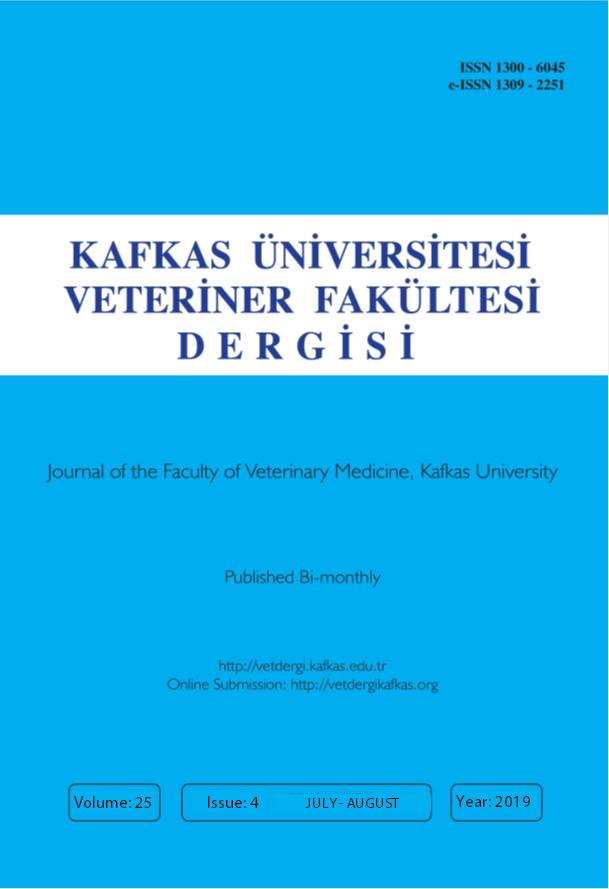
This journal is licensed under a Creative Commons Attribution-NonCommercial 4.0 International License
Kafkas Üniversitesi Veteriner Fakültesi Dergisi
2019 , Vol 25 , Issue 4
Effects of Exogenous Amylase in Transition Dairy Cows Fed Low-Starch Diets: 1. Lactation Performance
1Department of Animal Nutrition and Nutritional Diseases, Faculty of Veterinary Medicine, Bursa Uludag University, TR-16059 Bursa - TURKEY2Department of Zootechnics, Faculty of Veterinary Medicine, Bursa Uludag University,TR-16059 Bursa - TURKEY
3DSM Animal Nutrition & Health Turkey, TR- 34810 Istanbul - TURKEY
4Department of Animal Science, Faculty of Agriculture, Bursa Uludag University, TR-16059 Bursa - TURKEY
5Department of Animal Nutrition and Nutritional Diseases Faculty of Veterinary Medicine, Tekirdag Namık Kemal University, TR-16059 Tekirdağ - TURKEY
6Department of Dairy Science, University of Wisconsin - Madison, 1675 Observatory Dr., Madison 53706, USA DOI : 10.9775/kvfd.2018.21270 The objective of this trial was to determine the effect of exogenous amylase during the transition period in dairy cows on dry matter intake and lactation performance. The effect of exogenous amylase supplementation on lactation diets with low starch concentration (19.5% of dry matter) and dry period diets with moderate starch concentration (15.5% of dry matter) was evaluated. A total of 30 multiparus Holstein cows were randomly assigned to two groups fed diets with (n=15) or without amylase (n=15). Treatments were granular amylase (0.5 g of Ronozyme RumiStar per kg of total mixed ration dry matter) or control. The research was conducted starting at 21 d prepartum until 84 d postpartum. Starch and neutral detergent fiber concentrations averaged 15.5±0.5% and 15.7±0.9%, 42.6±1.1% and 43.4±1.2% in close up diets and 19.8±2.9% and 19.4±0.5%, 33.6±0.8% and 34.2±0.6% in lactation diets for control and amylase, respectively. Dry matter intake, milk yield and composition were evaluated for differences between treatments. Postpartum intakes of dry matter (DMI) and organic matter (OM), neutral detergent fiber (NDF), crude protein (CP), and starch intake were unaffected by treatment. Milk yield was not influenced by treatment, but numerically greater by 2.0 kg/d for cows fed amylase compared with control diet. The percentages of milk fat, protein and lactose were not impressed by treatment, however fat-, solid-, and energy-corrected milk were 2 kg/d greater for cows fed amylase diet than for cows fed control diet. Fat-, solid-, and energy-corrected milk feed conversions (kg/kg DMI) were 5 to 6% greater for cows fed amylase diet than for cows fed control diet (P<0.01). It was concluded that inclusion of amylase improved the feed efficiency of lactating cows fed a low starch diet, may offer for potential to increase milk yield; but the enzyme did not affect DMI. Keywords : Amylase, Dry matter intake, Milk production, Feed efficiency, Dairy cows










